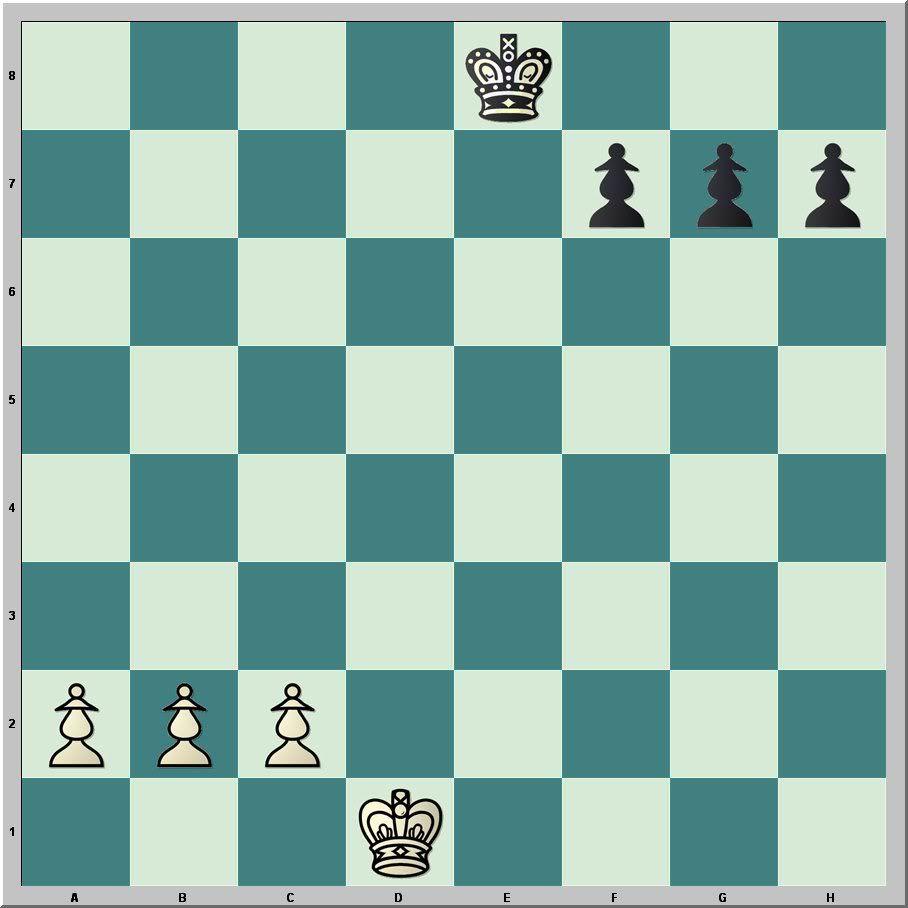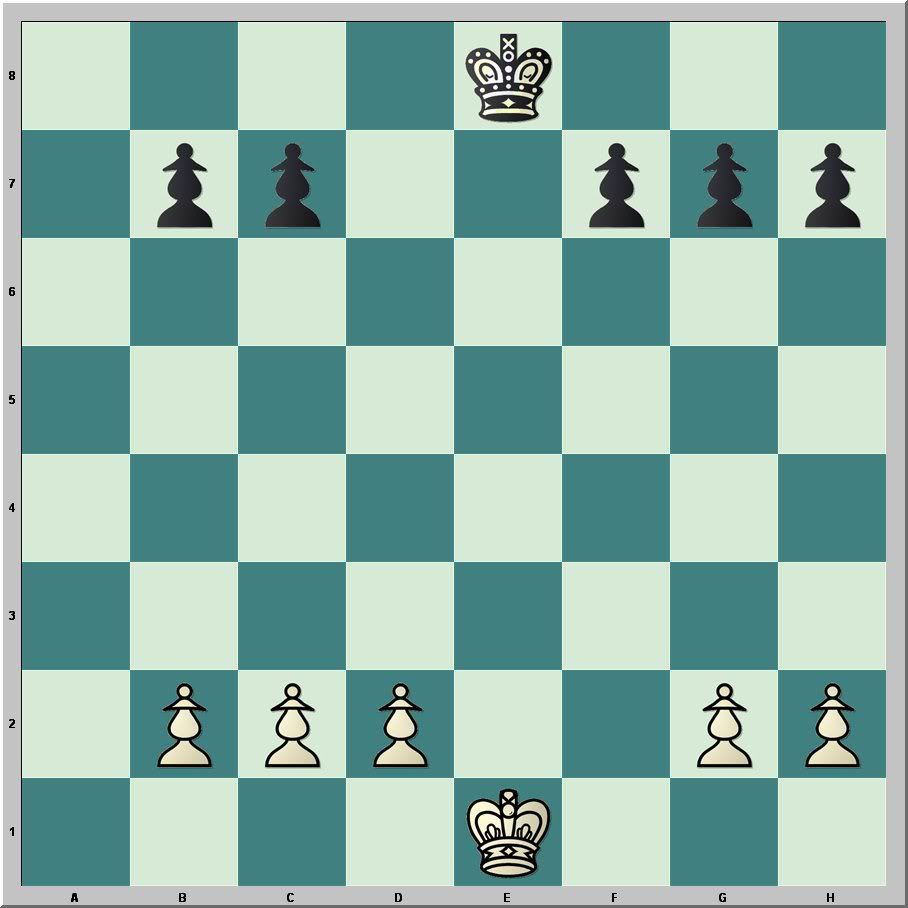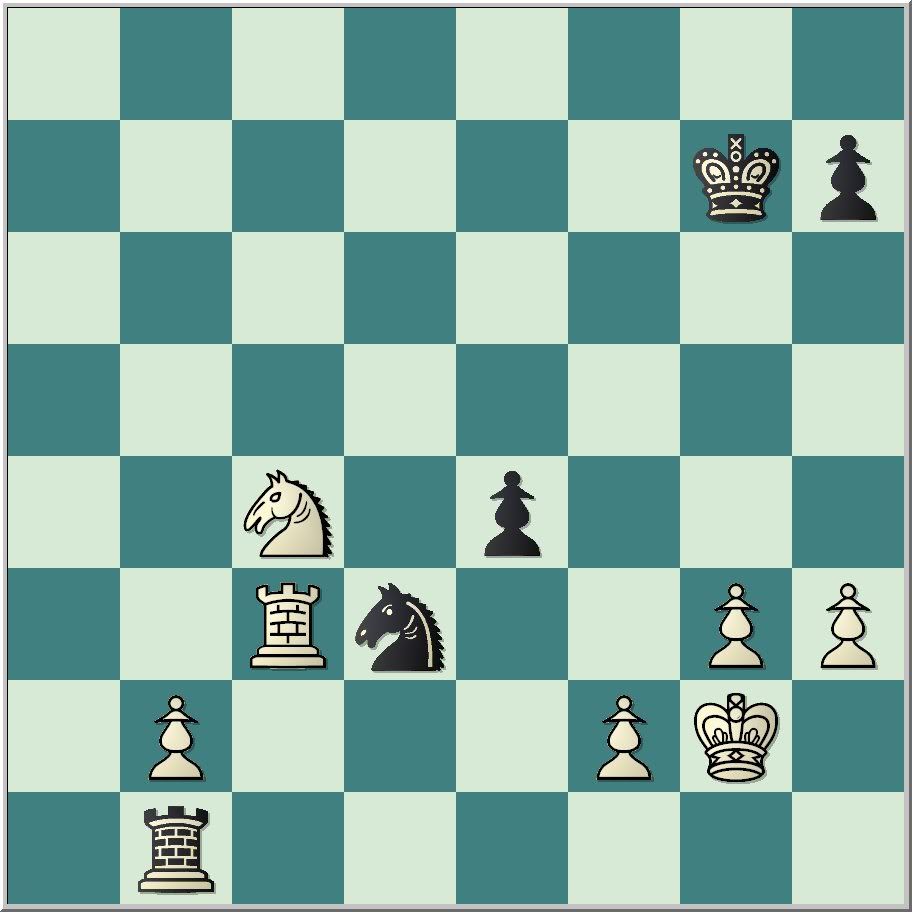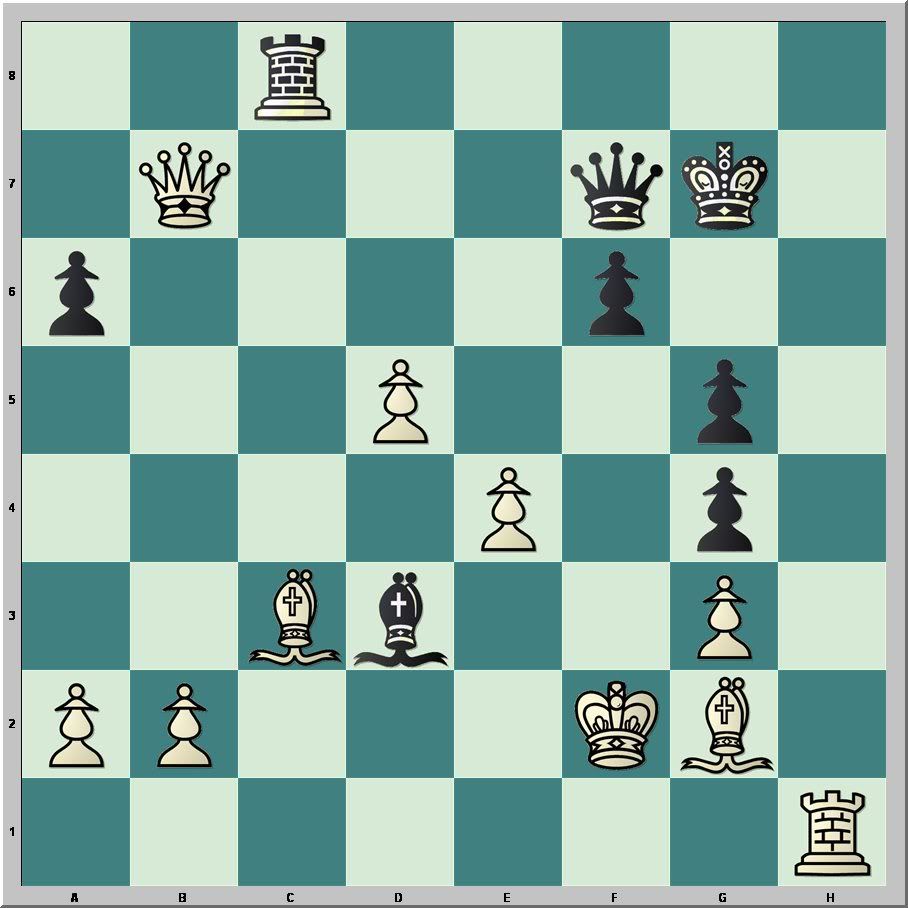In round three of the Spokane Chess Club's Fall Championship, I had Black against Nikolay Bulakh. Nikolay is a rapidly improving high school player. He has been coming to chess club since last spring, and he plays on Chess.com. Although we have played a few casual games, and some blitz, this was our first rated game.
I learned after the game that he had done some preparation, looking at perhaps my best game ever--a French I played in the City Championship Match in 2008. He did not prepare for the course our game took. Indeed, I had only a general opening plan before we sat down to play: play something that puts him in unfamiliar terrain.
Bulakh,N (1479) - Stripes,J (1823) [B43]Spokane, 2009
1.e4 e6Everyone in Spokane plays the French. At least that's what I've heard asserted by some players from Seattle, "if you can beat the French, you'll do well in Spokane." Several of Spokane's top players have certainly developed a reputation for playing the French. Our top player, FIDE Master David Sprenkle does not like playing against it. When he came to my board during a club simul this summer, he said, "you play the French," then played 1.c4. I said, "But, I was planning to play the Sicilian!" For many years, I always replied 1...c5 to 1.e4. The past few years, 1.e4 e6 has been just as automatic. The past year, I have aimed at flexibility and choice. I favor the French, but hold the Sicilian as a possible surprise weapon.
2.d4 c5 The Franco-Benoni often catches players by surprise. I like it because 1.e4 players are often uncomfortable going into queen pawn openings. I have had some good results with the Benoni, and have been known to play the Benko on occasion, although rarely from the Franco-Benoni.
3.Nf3 cxd4 4.Nxd4Nickolay opts for the Sicilian. I could play the Scheveningen, a solid opening choice.
4...a6 But, the Taimanov is sufficiently offbeat that most club players are not well prepared with a plan.
5.Nc3 Qc7 The Kan, or Paulsen, puts most players on their own.
6.Be2 Nf6 7.0–0 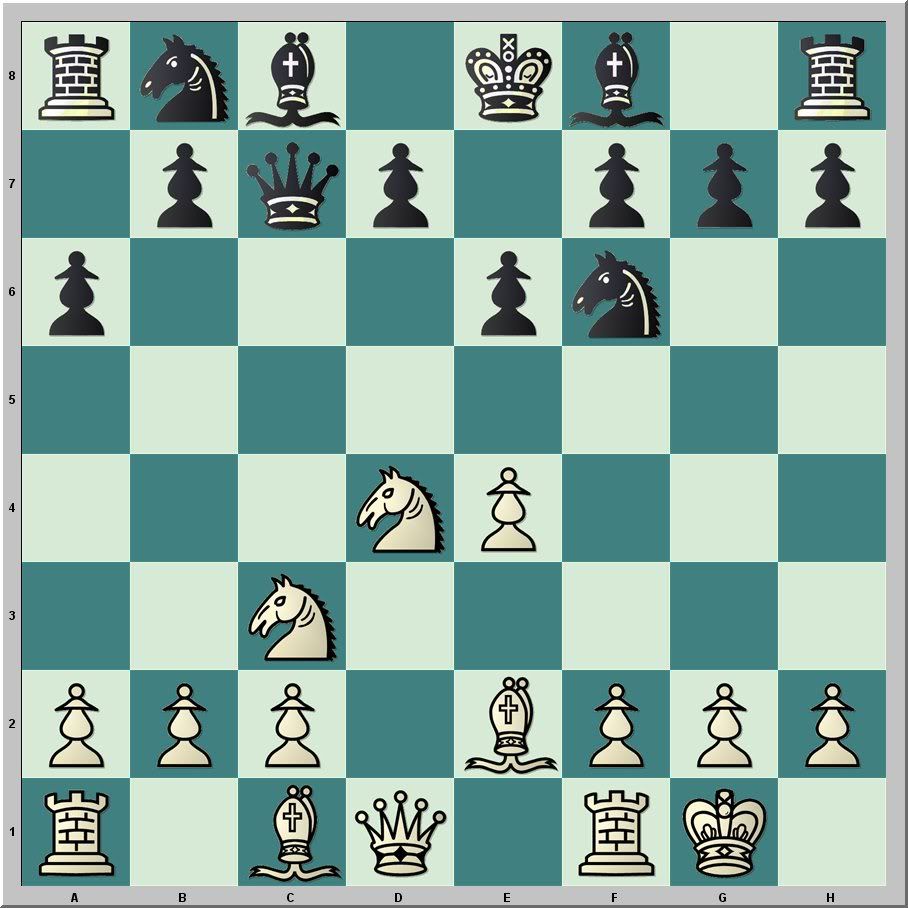
We are still in mainline opening theory, at least it is a mainline if that term applies to any line found in the tables of the
Encyclopedia of Chess Openings, and not yet relegated to the footnotes. My opponent has used twelve minutes getting to this position; I've used three.
Black's normal move here is 7...Bb4, which generally leads to positions described in the books as unclear. I have played it in online games, but more often have thrown out an offbeat move that first appeared in
Chess Informant 63/148 in Perez-Garcia, 1995 from the Cuban Championship. This game is found in the footnotes of ECO.
7...Bc5 8.Nb3 Perez-Garcia continued 8.Be3
8...Ba7 8...Bb4 may be better. I've used four minutes to my opponent's twenty-two. Tucked back on a7, my bishop will force my opponent to think about it for the rest of the game.
9.Kh1 h5
9...Nc6 has been played, but this move does not appear in my database. I spent five minutes considering this risky move, and decided that it gave my opponent more problems to solve than it was likely to generate for me.
10.h3 10.f4! is nearly always a useful move against the Sicilian. Moreover, when a player has delayed castling, the king must be punished.
10...b5 11.Bg5 White wants to take advantage of the difficulty Black will have to castle.
11...b4 12.Bxf6 gxf6 13.Nb1 
13.Na4 loses the knight.
13...Bb7 13...Nc6 also attracted attention. I have used seventeen minutes; Nikolay spent forty-five. We've been at the board a bit over an hour, and I am hapy with my position because I think my pieces are coordinated much better than his.
14.N1d2 Nc6 15.Nc4 Ke7 I did think about 15...O-O-O, but saw no benefits to giving up the exchange. My plan is to create some tactics, possibly with a rook sacrifice, then swing the other rook over for the coup de grace. Before playing 15...Ke7, it was necessary to be certain my opponent could not wrest open the center. It seems, however, that my attack is coming faster, my pieces are better coordinated, and any action in the center can be met with superior force. I spent eight minutes thinking about this move--my longest think of the game.
16.Bxh5??
It is always tempting to be ahead a pawn, but this error helps Black launch an attack against the White king. 16.Qd2 at least threatens to start a fight in the center. My opponent has used half of his allotted two hours.
16... Ne5 This move is not the computer's choice. According to my chess software, my next several moves reveal my failure to press the attack with the most precise and accurate moves.
17.Nxe5 17...Ncd2 makes Black's job more difficult.
17...Qxe5 18.Bg4 Bxe4 18...Qxe4 forces concessions in the pawn structure, and wins a piece.
19.Qd2?? 19... f5
19... f5 Again, Rag8 is superior to my moves.
20.f4??White's string of blunders testify to the difficulty of the position in which he has found himself, perhaps due to having been lured into an unfamiliar opening. At least, I am tempted to give myself credit for creative transpositions.
20... fxg4! 
It took me two or three minutes to realize there was no reason to move the queen.
21.Qxb4+ d6 22.Kh2 g3+ 23.Kxg3 Qg7+ 24.Kh2 Qxg2# 0–1
